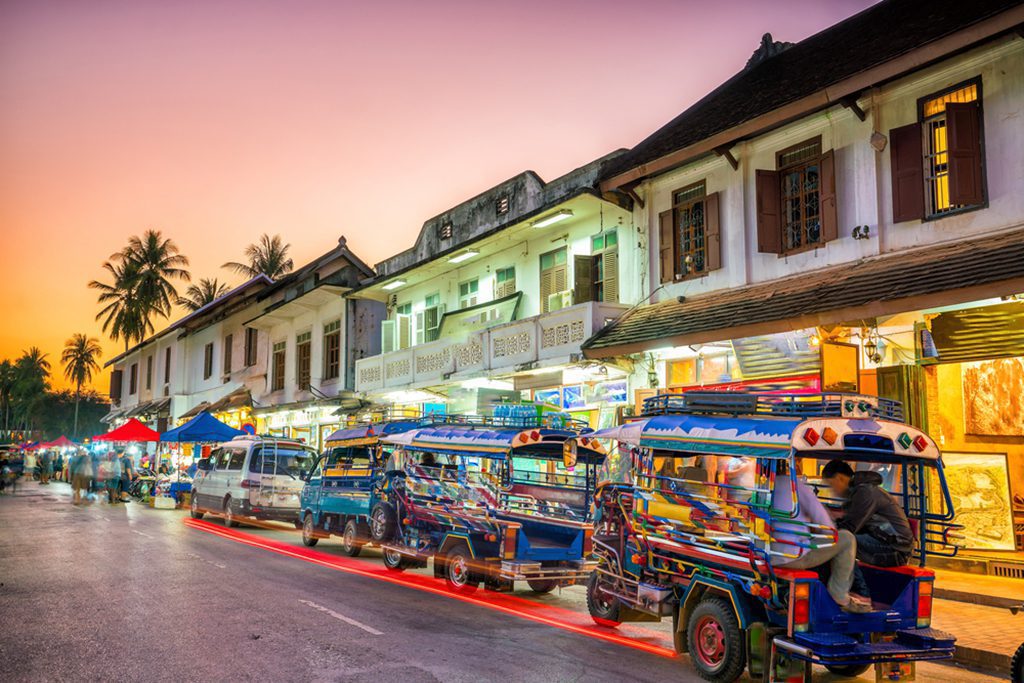Laos, a small landlocked country located in Southeast Asia, may be the least well-known country in the region, but it is impossible not to fall in love with the country’s outstanding natural beauty and wonderful, welcoming population.
It’s a place where you can experience both the natural beauty of the country’s jungles, hills, and rivers as well as the rich culture of its people. Laos also has many charming villages and towns that are just waiting to be discovered, in addition to its impressive temples and agricultural landscape. There are certain locations in the world, and Laos is one of them.
Explore the wild heart of the jungle and learn about the history of Luang Namtha. Luang Namtha is a province in northern Laos that is characterized by its verdant forests, flowing rivers, and picturesque valleys. A multi-day hike is the best way to see the scenery for yourself if you’re in search of excitement.
Most treks in Luang Namtha take between three and five days to complete; however, this varies depending on the path and the trekking company you choose. You can look forward to outdoor camping and trips to remote villages inhabited by ethnic minorities.
14. Kuang Si Falls
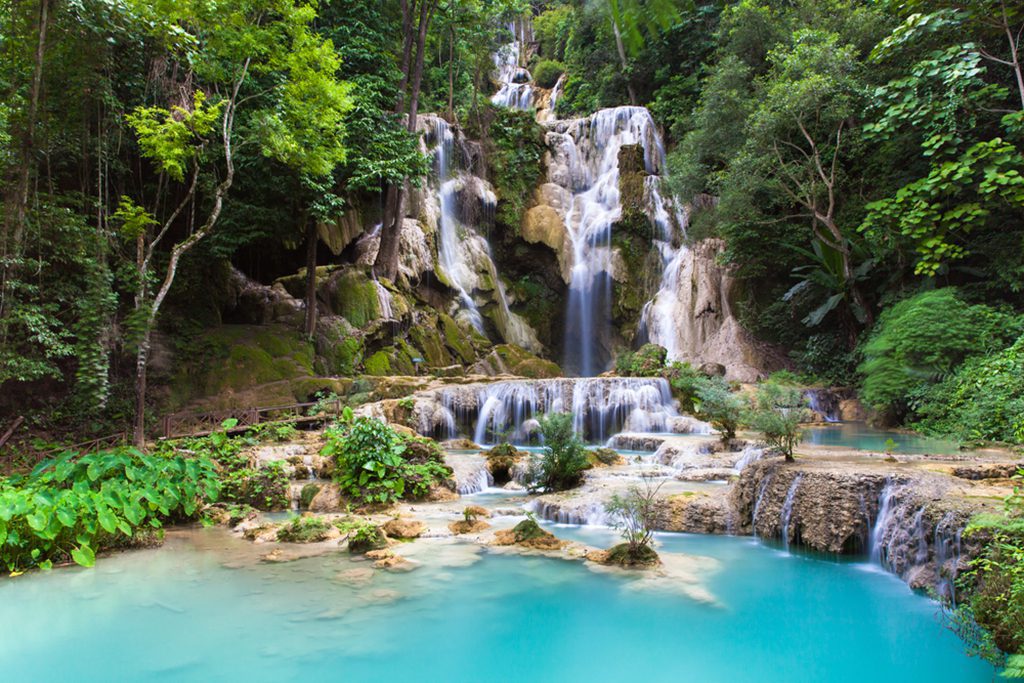
the magnificent Kuang Si Waterfalls nestled in the lush greenery of Luang Phrabang, Laos. Image source: Elena Ermakova/Shutterstock.com
Kuang Si Falls, with its soothing waterfalls, is a symbol of peace. Nestled between verdant foliage and jagged limestone cliffs, this three-tiered waterfall lies in the heart of the jungle. A turquoise pool awaits you at the foot of the falls for a revitalizing swim.
To get a panoramic perspective of the surrounding area, hikers can climb to the top of Kuang Si Falls. The climb is about 15 minutes long and, despite the rugged terrain, is well worth it since it offers one of the best vistas in all of Laos.
13. Golden Buddha
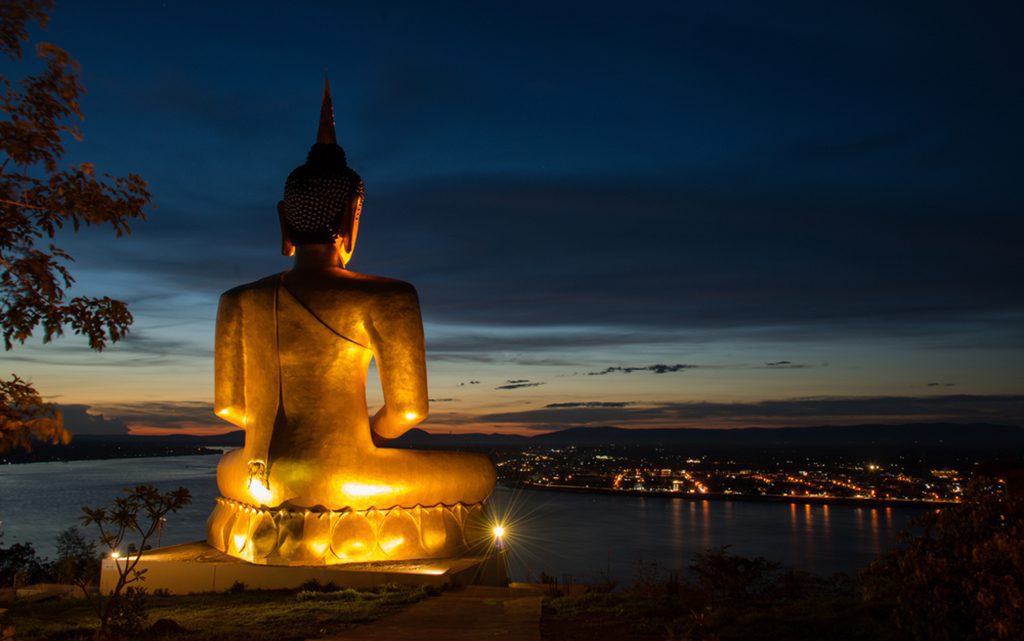
A grand view of the impressive golden Buddha statue perched on a mountain near the Mekong River in Laos. Image source: Saylakham/Shutterstock.com
You can’t visit Pakse and not see the enormous golden Buddha statue perched on a hill above the Mekong. Numerous additional statues, including one of the Snake God, who watches over and protects the Buddha statue, can be seen on the climb up the hill to him.
You can reach the Buddha from Pakse by using a taxi, a bike, or crossing the Nippon Bridge. The enormous statue of the Buddha is located on top of a lotus flower, with its back to the city and its front to the Mekong River. The sunrise and sunset are very beautiful, but you can enjoy this vista at any time of day.
12. Kong Lor Cave
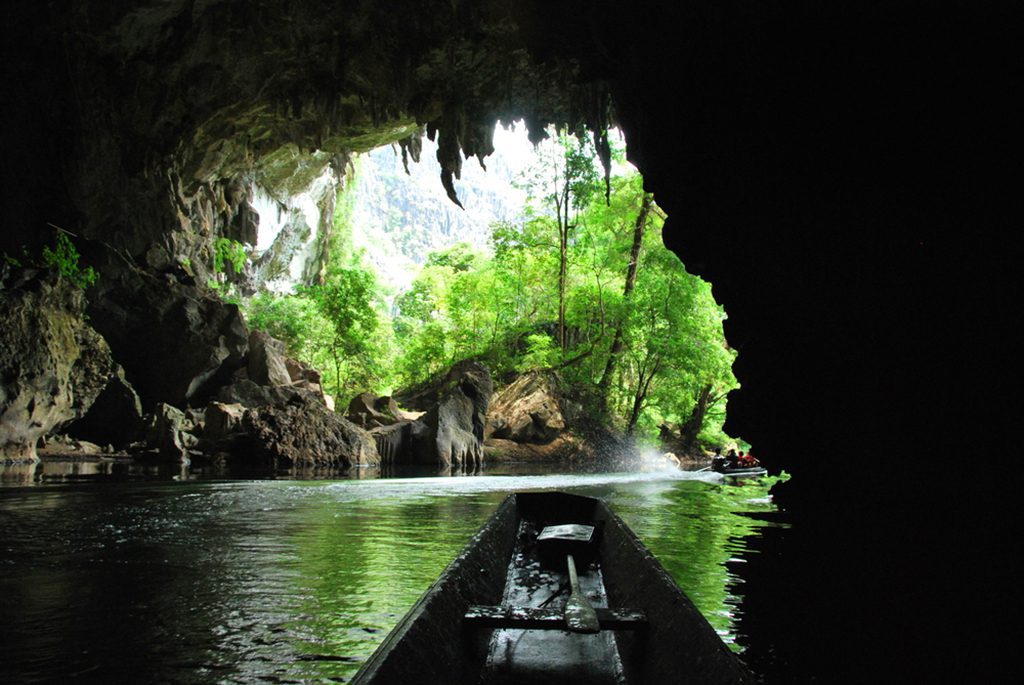
An adventurous boat journey through the captivating Kong Lor Cave, revealing its grandeur in central Laos. Image source: James Wagstaff/Shutterstock.com
The Kong Lor Cave can be found deep into the unexplored wilderness of Phu Hin Bun National Park. The walls of this natural marvel are almost 300 feet high, and they are adorned with enormous stalactites.
Getting to the cave requires hiring a speed boat to navigate the Nam Hin Bun River. You can view the cave’s gloomy interior as you leave. The magnificent and eerie Kong Lor Cave is made more visible thanks to the use of multicolored lights in certain areas.
11. Bokeo Gibbon Experience
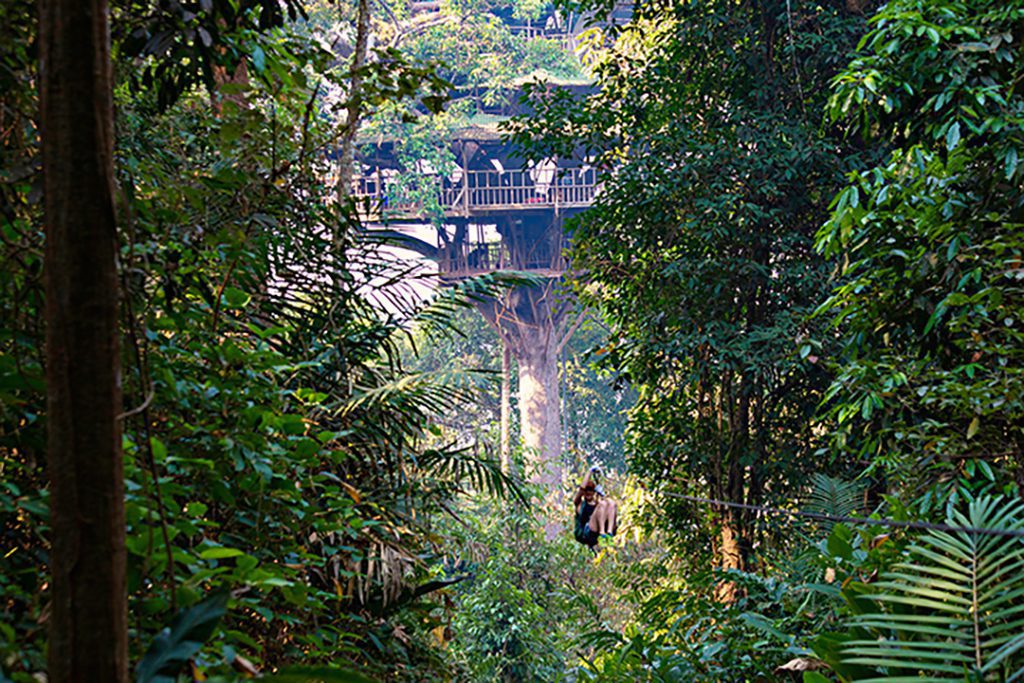
A thrilling view of a treehouse and zip line course amidst the lush jungle of Laos. Image source: Sun_Shine/Shutterstock.com
An exciting and perhaps one-of-a kind experience, the Bokeo Gibbon Experience can only be found in Laos. In one of the world’s tallest treehouses, you can interact with wild gibbons up close and personal.
Beginning with a hike into the dense jungle, the Bokeo Gibbon Experience will introduce you to gibbons and other jungle inhabitants, including deer, leopards, pigs, and even tigers. The following few nights will be spent in a tree house high in the treetops. An adrenaline-pumping zip line tour across the jungle is also a part of the Bokeo Gibbon Experience.
10. Xieng Khuan
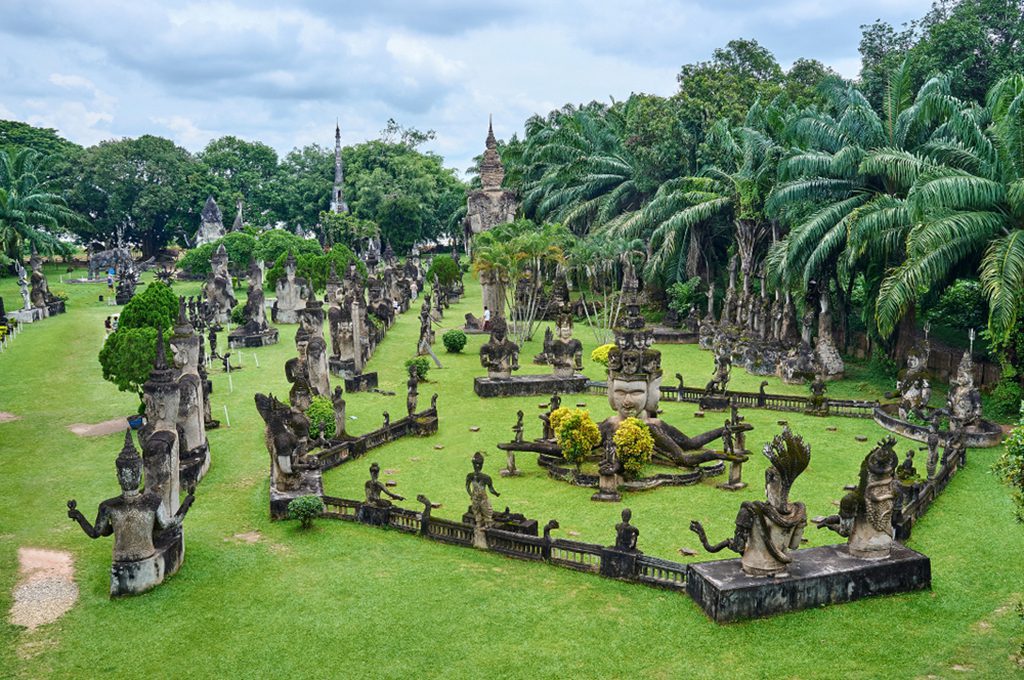
A serene view of Wat Xieng Khuan, a famous Buddhist sculpture park in Vientiane, Laos. Image source: photo_jeongh/Shutterstock.com
Xieng Khuan (also known as Buddha Park) is an interesting destination to visit for its collection of religious figures and statues, despite the fact that it is not technically a temple. Buddha Park, to the southeast of Vientiane near the Thai border, is home to approximately 200 statues of various Buddhist and Hindu deities, many of which are made from concrete.
The bizarre park is filled with statues of people, gods, demons, and animals. Take the staircase from “hell” to “heaven” by passing through the gaping maw of a 10-foot-tall demon’s head. The park is also home to a massive reclining Buddha sculpture that is 130 feet in length and serves as its focal point.
9. Tad Sae Waterfalls
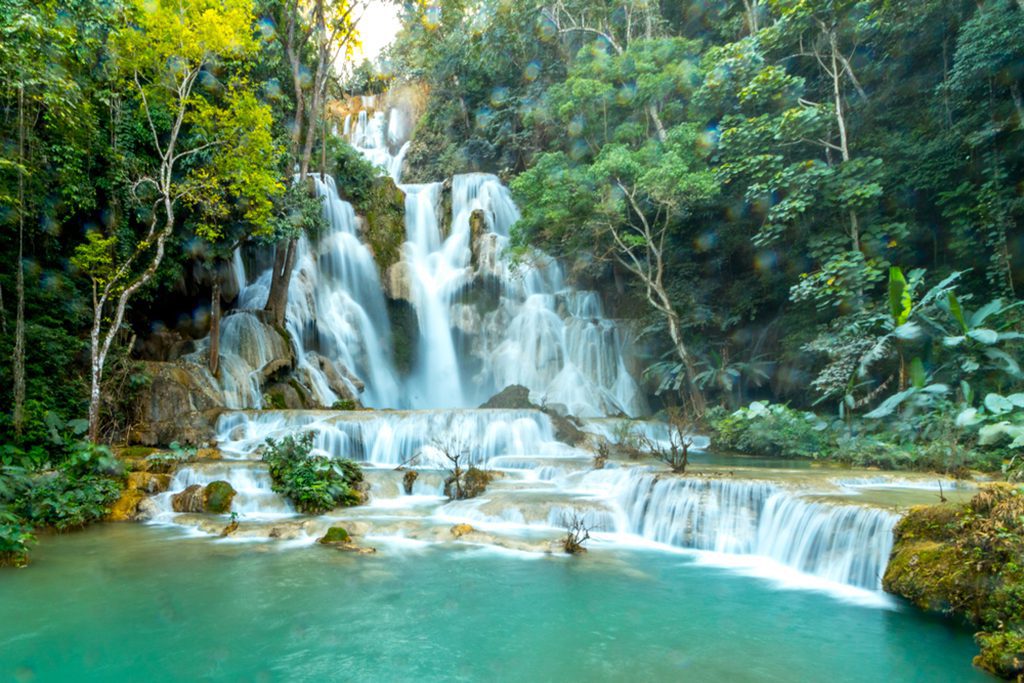
A scenic view of the mesmerizing Tad Sae waterfall near Luang Prabang, Laos. Image source: Petr Maderic/Shutterstock.com
The peaceful Tad Sae Waterfalls are the perfect place to spend a day relaxing. waterfalls over yellow limestone cliffs, and the sight is further enhanced by the lush jungle that surrounds the whole set of falls.
The falls appeal to a more local crowd, and you’ll find lots of Laotian families congregating here for a dip or picnic. Relax in the clear pools or on the offered loungers. You’ll also be close to a variety of dining options, retail stores, and cafés.
8. Wat Xieng Thong
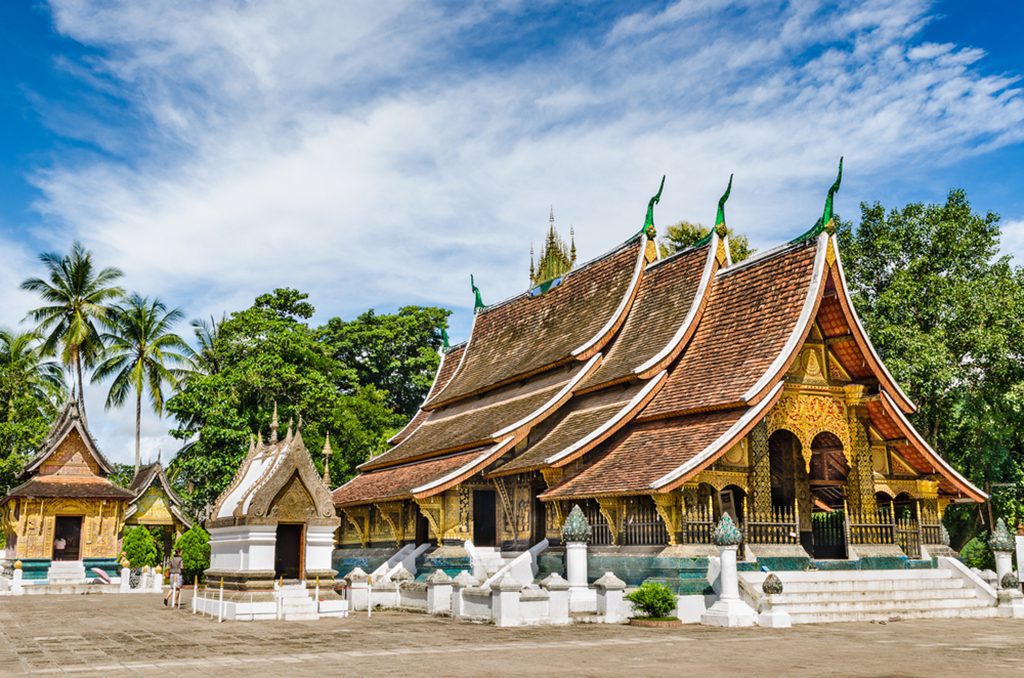
The majestic Wat Xieng Thong Temple stands proudly in Luang Prabang, Laos. Image source: Wuttichok Panichiwarapun/Shutterstock.com
When in Luang Prabang, don’t miss your chance to see Wat Xieng Thong, one of the most renowned temples in all of Laos. The palace of King Setthathirath was constructed in 1559 for the purpose of hosting royal ceremonies and festivities.
A remarkable example of traditional Laotian architecture, this Buddhist temple is one of the most impressive in the country. There are gold stencils of mythical beasts and deities painted on the dark red and black walls within. The halls’ walls and doors are likewise adorned with elaborate golden decorations.
7. Pha That Luang

The iconic golden pagoda of Pha That Luang Temple shines brightly in Vientiane, Laos. Image source: tkroot/Shutterstock.com
Incredible Pha That Luang Stupa in the center of Vientiane is one of the city’s most recognizable landmarks and a significant part of Laos’ cultural identity. The sturdy and painted gold stupa rises more than 140 feet into the air and has three stories. After Vientiane was chosen as the capital of the Lan Xang Kingdom, construction on this structure began in 1566.
Many Buddhists make the journey to Pha That Luang with the firm belief that the stupa houses Buddha’s breast bone. Temples of various kinds, each exquisitely decorated with red roofs and gold façades, can be seen in the area around the stupa.
6. Wat Phou
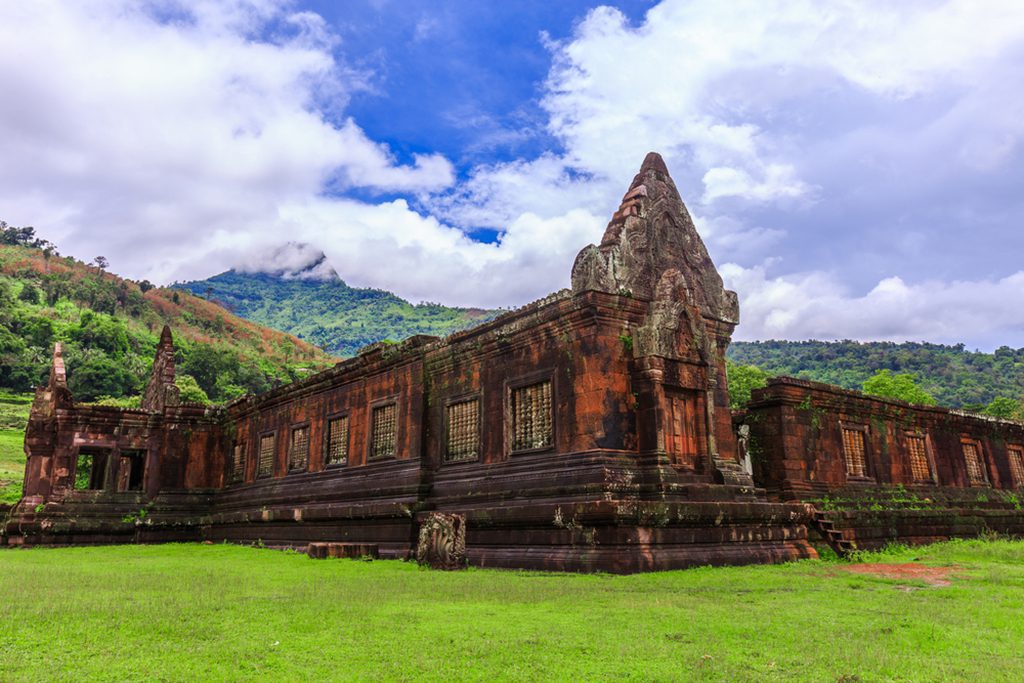
A glimpse of the ancient temple complex Vat Phou or Wat Phu in Laos. Image source: Avigator Fortuner/Shutterstock.com
The ruins of Wat Phou can be found at the foot of the lush Phou Khao mountains. These Khmer Hindu temples were built in the 10th and 11th centuries and are said to be dedicated to Shiva. It has been converted into a Theravada Buddhist temple and is now a major tourist destination in southern Laos.
Many of the buildings are in disrepair, but the ruins that remain are impressive. There are boundary marks along the main road leading to the sanctuary, and on each side, you can view one of the two palaces. Once inside the temple, you’ll find a library beside Buddha images and carved stonework.
5. Vieng Xai Caves
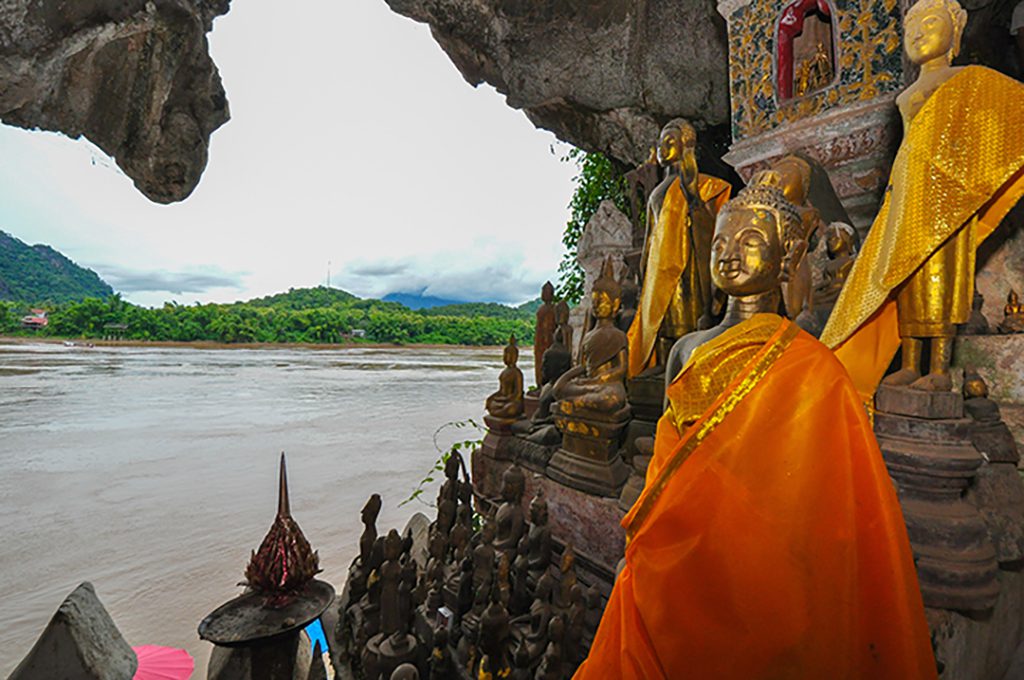
A focused Buddha statue in the Tam Ting caves. Image source: Kento35/Shutterstock.com
The Vieng Xai Caves are a hidden gem that can only be reached by boat from the sleepy village of Vieng Xai. During the Indochina War, the caverns housed nearly 20,000 soldiers and civilians, despite their beautiful natural setting. Over the course of nine years, a whole community was built up within those caverns.
However, even if you can only visit a small number of these sites, it is still well worth your time to learn about Laos’ turbulent past. Some of the caverns have been converted into living quarters, while others have been turned into theaters.
4. Si Phan Don
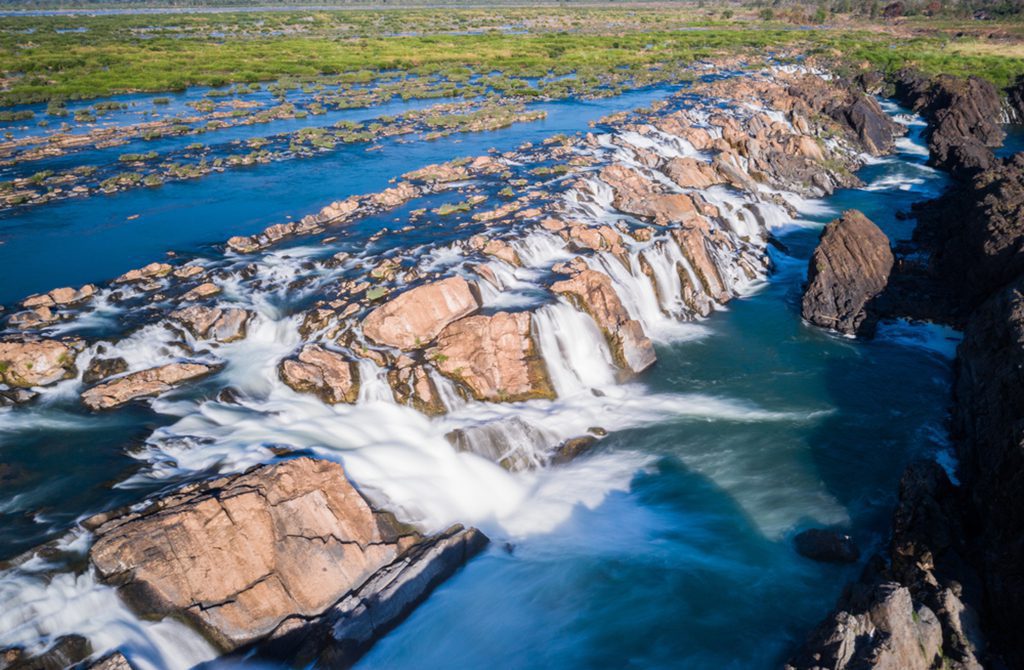
The majestic Mekong River flowing through the picturesque 4000 Islands in Laos. Image source: Nhut Minh Ho/Shutterstock.com
The Si Phan Don islands are scattered along the Mekong River. During the monsoon season, the river floods and covers several of Si Phan Don’s islands; nevertheless, the three major islands of Don Khong, Don Det, and Don Khon remain accessible.
You can learn a lot about Laotian history and culture by traveling around the Si Phan Don islands. Along the Mekong River’s banks, you’ll discover authentic houses, shops, and restaurants.
3. Plain of Jars
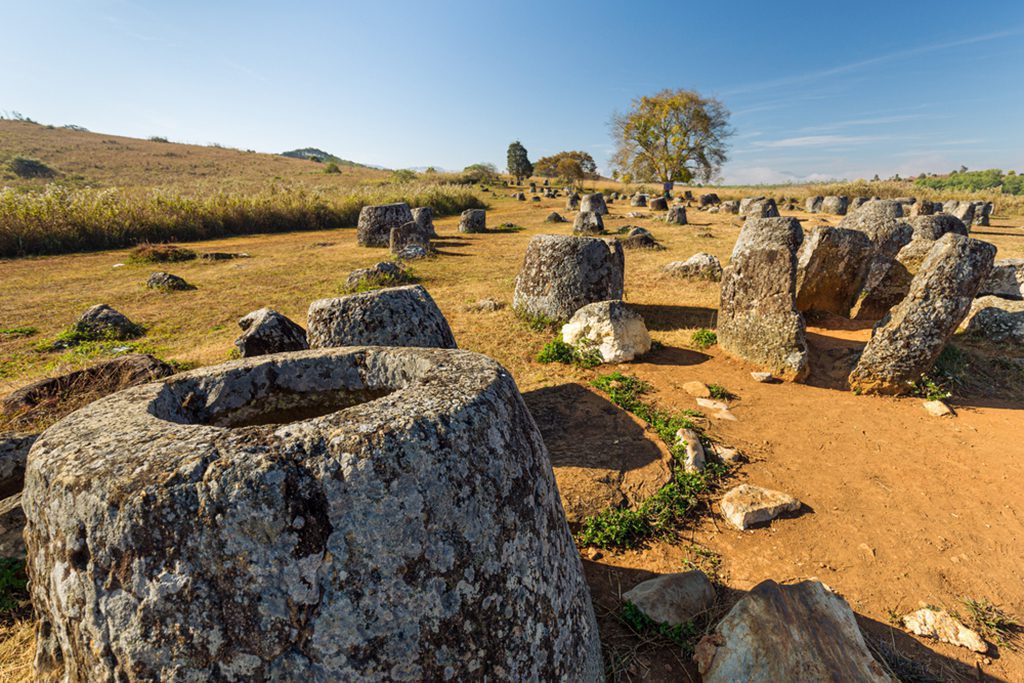
Mysterious stone jars scattered across the Plain of Jars in Laos. Image source: sabine_lj/Shutterstock.com
One of the most peculiar sights in all of Laos is the enigmatic Plain of Jars. Hundreds of stone jars, some as heavy as 14 tons, can be found strewn throughout the Khouang plain in the Lao Highlands.
Both the jars’ age and place of origin have been the subject of heated discussion among historians. They were likely used to store alcoholic beverages and edibles for the first time sometime between 1,500 and 2,000 years ago. There are many who think the jars were even used as urns for cremated remains.
2. Tube the Nam Song
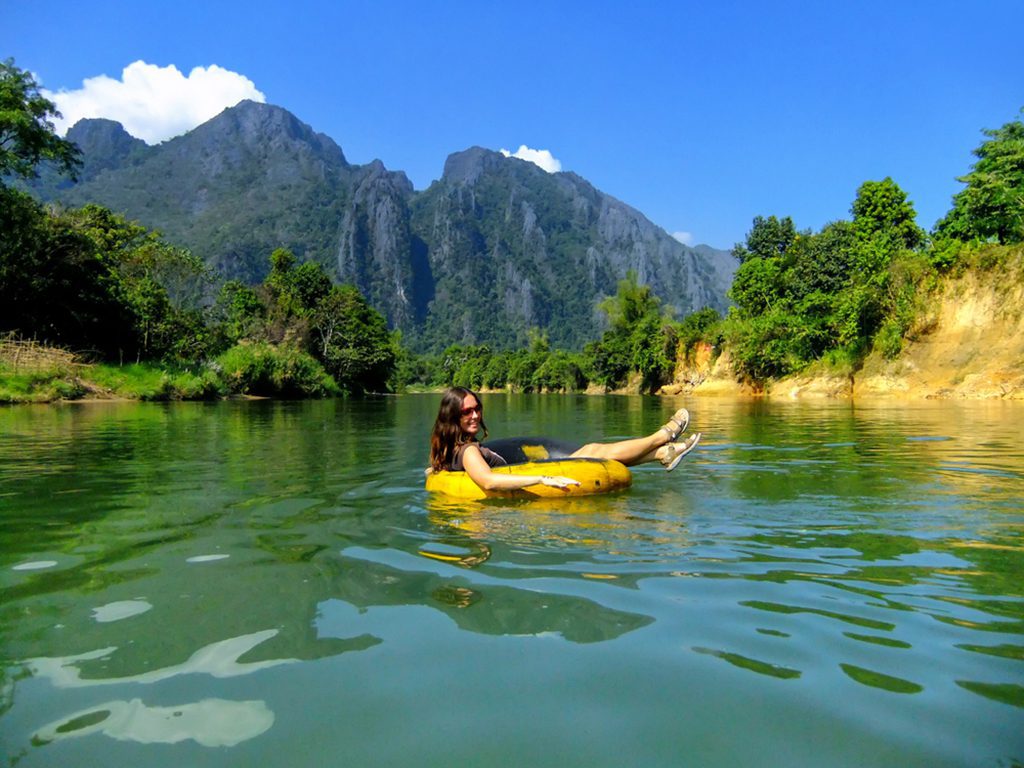
Adventurous tourists tubing down Nam Song River amidst stunning karst scenery in Vang Vieng, Laos. Image source: Don Mammoser/Shutterstock.com
Vang Vieng is a beautiful place to take a relaxing float along the Nam Song River and take in the surrounding scenery. Both residents and tourists frequent the area to relax in the refreshing water and perhaps enjoy a drink or two.
You can stop at any of the many bars that line the riverbanks as you tube down the river. You can either stay and party all day or you can return to your tube with a bucket of alcohol and keep on floating.
1. Luang Prabang Old Town

Serene atmosphere on a charming street in the old town of Luang Prabang, Laos. Image source: f11photo/Shutterstock.com
Spend a few days in Luang Prabang’s Old Town if you’re interested in French colonial homes, elaborate Buddhist temples, and lively night markets. Travelers of all stripes are sure to enjoy the abundance of cultural activities in this picturesque village.
Luang Prabang Old Town is magnificent even without its natural setting of verdant hills and karst mountains. You can find interesting buildings and sites around every corner, so it’s well worth the effort to explore the area on foot.


